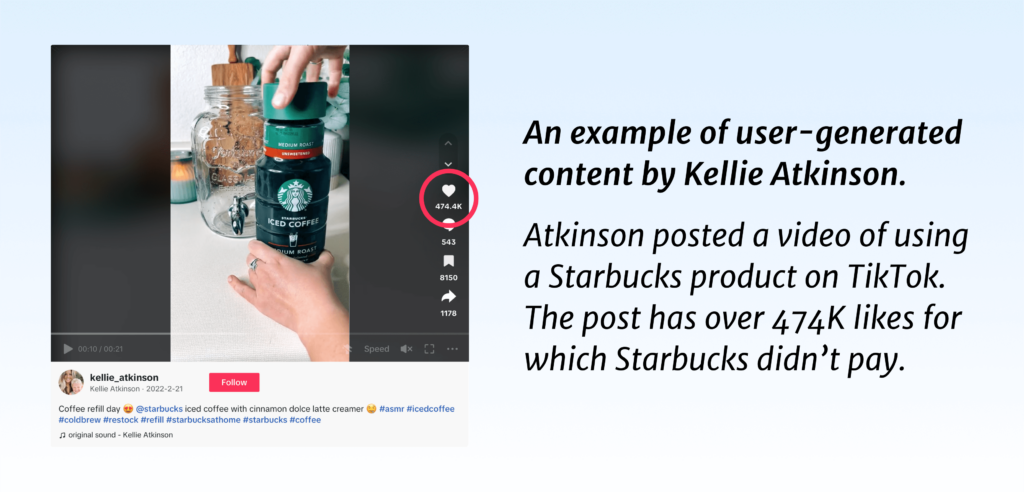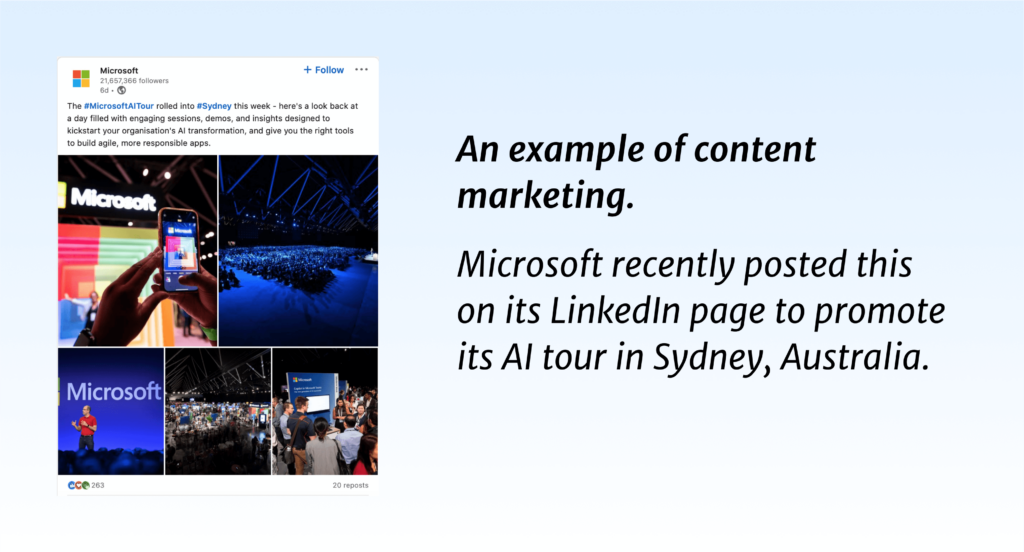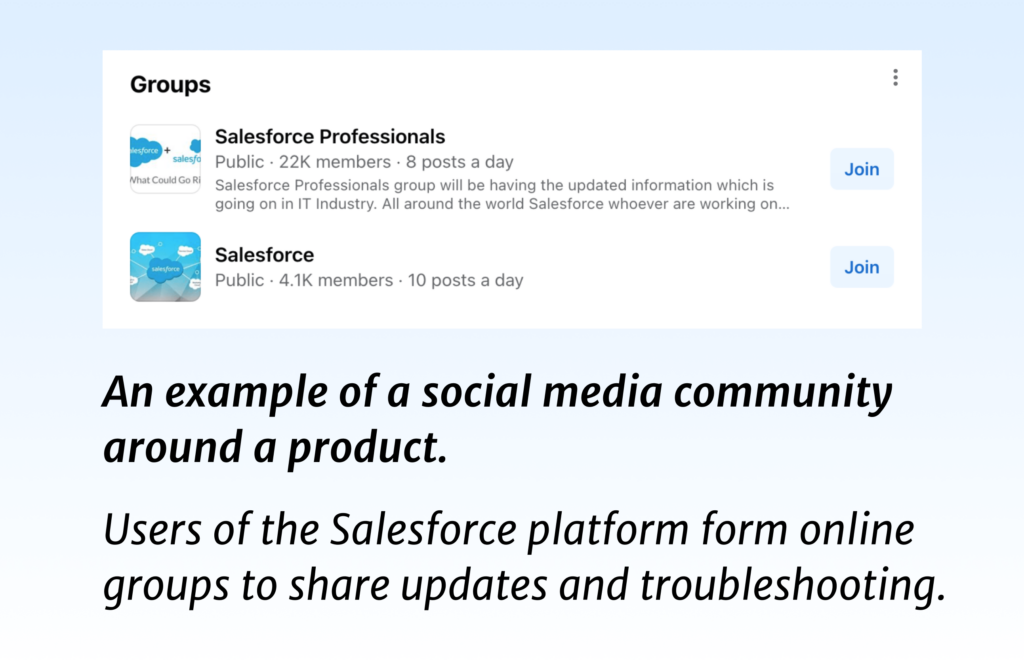5 Ways to Use Social Media to Influence Customers
Blog Categories:
Published:
February 18, 2024
Reading Time:
6 minutes

Have you ever wondered how social media influences your customers’ purchasing decisions? Did you know how online social proof, influencers, and social media communities play pivotal roles in shaping consumer behavior in today's digital age?
Just twenty years ago, there was no such thing as social media. Choices were limited, and so was the competition. But the tables have turned now—customers have more power today. They can go online and conduct their due diligence before entering their credit card details. And if they don’t like local products, they’ll simply order from overseas.
That’s why businesses must understand social media marketing to stay ahead of the competition. In this article, we'll explore various techniques and strategies for creating an audience, building a brand, and selling through social media platforms.
So, let’s dive into it.
Just twenty years ago, there was no such thing as social media. Choices were limited, and so was the competition. But the tables have turned now—customers have more power today. They can go online and conduct their due diligence before entering their credit card details. And if they don’t like local products, they’ll simply order from overseas.
That’s why businesses must understand social media marketing to stay ahead of the competition. In this article, we'll explore various techniques and strategies for creating an audience, building a brand, and selling through social media platforms.
So, let’s dive into it.
KEY TAKEAWAYS
- Use the power of social proof to boost your brand image and increase sales. This can be done by showcasing testimonials, user-generated content, and influencer partnerships.
1. Social Proof
Social proof is a psychological phenomenon where people copy the actions of others in an attempt to reflect correct behavior for a given situation. Simply put, it's the influence that the actions, attitudes, and beliefs of others have on our behavior. For instance, if a hundred teenagers in a school follow a brand on social media, others may do the same. Here are some ways to utilize social proof effectively through social media.

(An example of user-generated content by Kelly Atkinson. She posted a video of using a Starbucks product on Facebook. The post has over 131,000 likes for which Starbucks didn’t pay.)

(An example of content marketing. Microsoft recently posted this on its LinkedIn page to promote its AI tour in Sydney, Australia.)

(An example of a social media community around a product. Users of the Salesforce platform form online groups to share updates and troubleshooting.)

(An example of creating a custom audience through Facebook Ads Manager.)

(An example of user-generated content by Kelly Atkinson. She posted a video of using a Starbucks product on Facebook. The post has over 131,000 likes for which Starbucks didn’t pay.)
- Testimonials: Gather feedback and testimonials from satisfied customers and display them on your website and social media profiles.
- User-generated Content: This is a big one. Encourage customers to share their experiences with your product or service on social media platforms using branded hashtags or tagging your company. As shown in the example above.
- Influencer partnerships: Collaborate with influencers or micro-influencers in your niche to reach a wider audience. You can leverage their credibility and following to promote your product or service.
- Reviews and ratings: Encourage customers to leave reviews and ratings on popular platforms like Google Reviews, Yelp, or Facebook. Then, highlight positive reviews and ratings prominently to build trust with potential customers.
2. Content Marketing
Back in the day, businesses would have to set up shops, hoping that customers would come in. Now, you could create social media content from your bedroom and expect thousands of customers to come to you. But it’s not as easy as it sounds. High-engagement content is one in which users are actively participating in the content by liking, commenting, sharing, and saving. This can lead to increased brand awareness, loyalty, and ultimately conversions. Let’s discuss how to do it like a pro.
(An example of content marketing. Microsoft recently posted this on its LinkedIn page to promote its AI tour in Sydney, Australia.)
- Use visuals: According to Venngage, over 50% of marketers believe visual content is crucial for their marketing strategies. So, incorporate eye-catching visuals, such as images, infographics, videos, and GIFs, to make your content more engaging and shareable.
- Invest in videos: According to HubSpot, 91% of consumers want to see more online videos from brands. Moreover, most marketers make social media videos the most, at 71%, followed closely by explainer videos at 70%. This is why you must add videos to your social campaigns.
- Include calls-to-action (CTAs): Routinely and strategically, add clear and compelling CTAs in your content to prompt users to take specific actions, such as subscribing to your newsletter, downloading a resource, or making a purchase.
- Host Q&A sessions or live events: Content doesn’t always need to be created, sometimes, you can just freestyle it. Organize live Q&A sessions, webinars, or AMA (Ask Me Anything) sessions to interact directly with your audience in real time and address their questions and concerns.
3. Social Media Communities
The terms “social” and “community” are cousins. So, why not use social media to build online communities? According to research, 1.8 billion people use Facebook Groups monthly. Other social platforms may not have the Groups feature like Facebook, but other ways exist to form communities. These communities can be built around a wide range of topics, such as hobbies, industries, brands, causes, or products, and they provide members with a platform to connect, share knowledge, seek support, and build relationships. Let’s understand how to go about this.
(An example of a social media community around a product. Users of the Salesforce platform form online groups to share updates and troubleshooting.)
- Create branded groups or pages: Establish dedicated groups or pages on social media platforms where community members can come together to engage with your brand, share content, and interact with each other.
- Facilitate discussions: Actively moderate discussions within the community to ensure they remain respectful, on-topic, and constructive.
- Encourage users to post content: Showcase content created by community members to highlight their contributions and foster a sense of belonging and ownership.
- Discuss your products: Even though you may not want to come off as overly salesy, you should remember that the overall goal for creating social pages as a business is to increase sales. So, make sure to discuss new products and services in online communities.
4. Paid Social Media Advertising
Well, this is always an option or even a necessity in many cases. If you want to use social media platforms to reach a specific target audience faster, you can do so by spending some coins. Basically, you can create and display ads to users based on their demographics, interests, behaviors, and other targeting criteria. Let’s discuss some good practices around this.
(An example of creating a custom audience through Facebook Ads Manager.)
- Define your audience: This is crucial because you don’t want to waste money on an incorrect audience. So, identify your target audience based on demographics (age, gender, location), interests, behaviors, and other relevant criteria.
- Create compelling ad content: Develop visually appealing ad creatives, including eye-catching images or videos, compelling ad copy, and clear calls-to-action (CTAs). It must stand out—steer clear of generic ads and try something out of the box.
- Choose the right ad format: Social media platforms offer various ad formats, including image ads, video ads, carousel ads, slideshow ads, and sponsored posts. Choose the one that’s most likely to help you meet your goals. You could also A/B test various formats and go 10X on the one that works.
- Optimize for mobile: Since the majority of social media users access these platforms via mobile devices, ensure that your ad content is optimized for mobile viewing.
5. Hire Social Media Marketing Consultants
Every technique mentioned in this article is easier said than done. For instance, when you start creating content, you may realize that you’re not good at video editing. Or maybe you could get stuck trying to narrow down the audience while creating Facebook ads. But don’t worry, there are experts who can guide you through every step. Enter social media marketing consultants. Here at Consultport, with over 10,000 top-tier consultants, we’ve been connecting businesses with highly experienced consultants for years. Let’s shed some light on what these experts can do for you.
If your social media strategy isn’t working out like you expected or if you just don’t have the right resources to execute one, get in touch with us now.
Let's chat and discuss how Consultport can help you achieve your social media goals!
- Content strategy: Let's dive deep into your industry and craft a content strategy that speaks directly to your audience's needs and desires. We'll polish your product and service offerings to ensure they resonate with your target market like never before!
- Visual design improvement: Say goodbye to boring social media interfaces! We'll leverage user data and cutting-edge design techniques to make your social media presence pop.
- Brand identity: Ready to stand out from the crowd? Our experts will work with you to define and refine your brand identity and ensure consistency across all platforms.
- Campaign ROI assessment: Let's talk results! Our experts will assess the return on investment of your social media marketing initiatives and pinpoint strengths and weaknesses to help you optimize your strategy moving forward.
If your social media strategy isn’t working out like you expected or if you just don’t have the right resources to execute one, get in touch with us now.
Let's chat and discuss how Consultport can help you achieve your social media goals!
Share This Story, Choose Your Platform!



